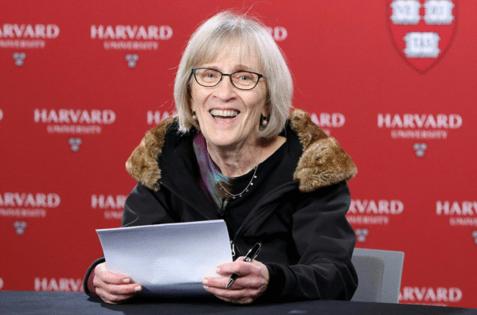Daniel Moss: Why dads, not 'duds,' matter for the baby bust
Published in Op Eds
Peak population is coming for all of us. Sensible measures can respond to the strains imposed by smaller families, but cultural norms matter as much as policy outcomes.
While Federal Reserve Chair Jerome Powell was undoubtedly the main attraction at Jackson Hole, there were other weighty issues on the table. The role of men — and societal values — in declining fertility was among them. Nobel laureate Claudia Goldin told the Fed’s conference in Wyoming that it’s important not to overlook tradition when explaining low fertility, and when governments canvas ways to revive it. (You might have missed the demographic focus amid the speculation about when the central bank will reduce interest rates.)
There are sound reasons to pay attention. In most of the world, birthrates are dwindling. In developed countries and in some major emerging markets, the total fertility rate, roughly defined as the number of children a woman will bear in her lifetime, has slipped below 2.1. That's generally recognized as the level required for a population to replenish itself. South Korea, Japan and China get headlines, though many United Nations members are below this marker.
There are implications for prices, budgets, safety nets and gross domestic product. Those already born are living longer, while the state has limited scope to raise fertility. Incentives provided to couples haven't produced sizable gains. Singapore, a highly successful nation by many yardsticks, had hoped for an increase last year. It wasn't to be. The TFR remained just below 1.
Ultimately, couples make their own decisions. Those conclusions will certainly be influenced by the cost of bringing up children. Other considerations matter: The priorities of would-be parents, and of individuals who might forgo families for an array of reasons.
Fathers are an important part of the puzzle, according to the paper Goldin, a Harvard University professor, presented. Yes, compared with a couple of generations ago, women have far more choice, and vastly better access to education. They aren’t about to forgo the professional aspirations they have worked so hard for. But that alone doesn’t explain fewer kids. The desires of males and females have become mismatched, according to Goldin. Men benefit more from upholding traditions than women; when chances are slim that men will ditch such conventions, women will be inclined to pass on children or postpone motherhood.
Women need to be assured that they can reap the financial rewards from having a career — and raising children. “The more men can credibly signal that they will be dependable ‘dads’ and not disappointing ‘duds,’ the higher will be the birthrate,” Goldin wrote. “Therefore, even though the major factor in the decline of fertility is increased women's agency, the real downside or obstacle is the need for husbands and fathers to reliably demonstrate their commitment.”
The challenge may be more pronounced in emerging markets. Swift industrialization coupled with healthcare and educational advances made East Asia, for example, prosperous. Social and cultural norms haven't evolved as quickly. Births out of wedlock in Korea, which has the lowest TFR in the world, are frowned upon. Single mothers in Japan are considered taboo. In Malaysia, which is on track to morph from an aging society to an aged one, unwed mothers are stigmatized — and sometimes even flogged. Prospective buyers of Singapore's Housing & Development Board flats must typically be married (or at least engaged), or be at least 35.
“If the countries that had rapid advances in economic development maintained various marriage and conjugal traditions...the fraction of childless women would increase with fertility declines,” Goldin said. “The rationale is that if the age at marriage increases with economic development as women seek more education and employment opportunities, but if it is difficult or impossible to have a child outside marriage, then childlessness will increase.”
The aging society, a byproduct of retreating fertility, presents many challenges. Artificial intelligence can do some lifting, and there is clearly a role for immigration. But this can be delicate. Bank of Japan Governor Kazuo Ueda, who is counting on a labor shortage to put deflation behind the country, acknowledged the role that foreign workers play even as the politics can be combustible. While they made up just 3% of Japan’s workforce, they accounted for more than half of its growth from 2023 to 2024.
Diminishing fertility doesn't have many cheerleaders, certainly compared with the 1970s when constraints on population growth were seen as a good thing. Now, the chatter is about a bust. Chad Jones of Stanford Graduate School of Business worries about unintended consequences of population decline: Stagnating living standards and a dearth of research and ideas among them.
The world's headcount will peak at around 10.3 billion in the 2080s, based on UN projections, and then start to head down. Government incentives and rules are unlikely to profoundly alter the trajectory. The real work may be to take a good hard look at ourselves.
_____
This column reflects the personal views of the author and does not necessarily reflect the opinion of the editorial board or Bloomberg LP and its owners.
Daniel Moss is a Bloomberg Opinion columnist covering Asian economies. Previously, he was executive editor for economics at Bloomberg News.
_____
©2025 Bloomberg L.P. Visit bloomberg.com/opinion. Distributed by Tribune Content Agency, LLC.
























































Comments